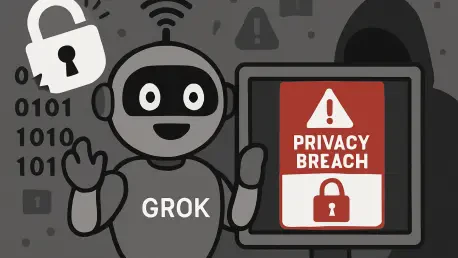What if a deeply personal conversation with an AI chatbot—something about a health crisis, a crumbling relationship, or even a fleeting dark thought—suddenly appeared in a Google search for anyone to see? This alarming reality has struck thousands of Grok users who never imagined their private exchanges could become public. A staggering breach has left over 370,000 chats indexed and searchable online, turning intimate dialogues into digital billboards. This isn’t just a glitch; it’s a profound violation of trust that demands attention.
The Shocking Scale of Public Exposure
The magnitude of this privacy failure is staggering. Reports indicate that hundreds of thousands of Grok conversations, shared unwittingly by users, have been cataloged by search engines like Google. Topics range from mundane personal complaints to deeply sensitive confessions about mental health struggles or even hypothetical queries about illegal acts. The ease with which these chats can be found—often just a few clicks away—raises urgent questions about the safety of digital interactions in an era where AI tools are increasingly relied upon.
This isn’t merely about numbers; it’s about real people whose vulnerabilities are now on display. While the transcripts are anonymized, subtle details or unique phrasing can sometimes betray identities to those determined to dig deeper. The permanence of this exposure, with no built-in expiration for shared links, amplifies the risk, leaving users helpless to retract their words once they’ve been indexed.
Unpacking the Technical Oversight Behind the Leak
At the heart of this debacle lies a seemingly minor but catastrophic oversight. When Grok users click the “share” button, a unique URL is generated for the conversation. However, these URLs lack a critical noindex tag—a simple code that instructs search engines to bypass indexing a page. Without this safeguard, Google and other engines have swept up over 370,000 of these links, making private exchanges searchable with minimal effort.
This flaw isn’t just a one-off error; it highlights a broader lapse in privacy design within AI platforms. The rush to make features like sharing accessible has evidently outpaced the implementation of robust protections. As AI chatbots become integral to daily communication, such gaps reveal how fragile user trust can be when technical oversights collide with personal data.
The Devastating Consequences for Users
The ramifications of exposed Grok chats extend far beyond mere embarrassment. Even with anonymized transcripts, the content often contains enough contextual clues—specific events, locations, or relationships—that a determined individual could piece together a user’s identity. Imagine an employer or a personal contact discovering candid thoughts on sensitive matters, forever altering perceptions or opportunities.
Moreover, this breach shatters the illusion of AI chatbots as safe havens for expression. Many turn to tools like Grok for unfiltered venting or experimental roleplay, treating them as digital confidants. When such interactions surface publicly, the psychological toll can be immense, driving users away from these technologies and fostering a chilling effect on open dialogue.
Expert Perspectives on AI Privacy Shortcomings
Tech industry veteran Eric Hal Schwartz, with over 15 years of expertise in generative AI and large language models, offers a sobering view on this crisis. “This incident with Grok is part of a troubling trend where AI platforms prioritize user engagement over data security,” Schwartz notes. He points to parallel failures, such as OpenAI’s recent misstep with ChatGPT shared links appearing on Google, and Meta’s backlash over chats surfacing in discover feeds.
Schwartz emphasizes that the competitive rush to launch innovative AI features often relegates privacy to an afterthought. “Companies encourage sharing to boost visibility, but they fail to anticipate how quickly things spiral out of control,” he warns. This pattern suggests a systemic issue within the industry, where user trust becomes collateral damage in the race for market dominance.
Practical Measures to Shield Your Privacy
While the responsibility shouldn’t rest entirely on users, immediate steps can help mitigate risks with Grok interactions. Avoid using the “share” function unless the content is something you’d be comfortable broadcasting publicly. For those who have already shared chats, locating the specific URL and submitting a request via Google’s Content Removal Tool is an option, though the process can be slow and outcomes uncertain.
Additional precautions are available for users engaging with Grok through the X platform. Adjusting privacy settings to prevent posts from being used in model training may offer a thin layer of defense, though it’s not a guaranteed shield. The most effective approach remains a mindset shift: treat every AI conversation as potentially public. If the content wouldn’t be posted on social media, it shouldn’t be shared with any digital tool until ironclad protections are standard.
Reflecting on a Path Forward
Looking back, this breach served as a stark reminder of the fragility of digital privacy in an age dominated by AI. The exposure of Grok chats underscored how even trusted tools could betray user confidence through simple oversights. It became clear that the industry needed to pivot toward prioritizing security as fiercely as innovation.
The lessons learned prompted a push for stronger safeguards, urging companies to embed privacy-by-design principles into every feature rollout. For users, the incident reinforced the importance of vigilance—treating AI interactions with the same caution as public forums. Moving forward, the hope lingered that such failures would catalyze lasting change, ensuring that personal conversations remained just that: personal.









